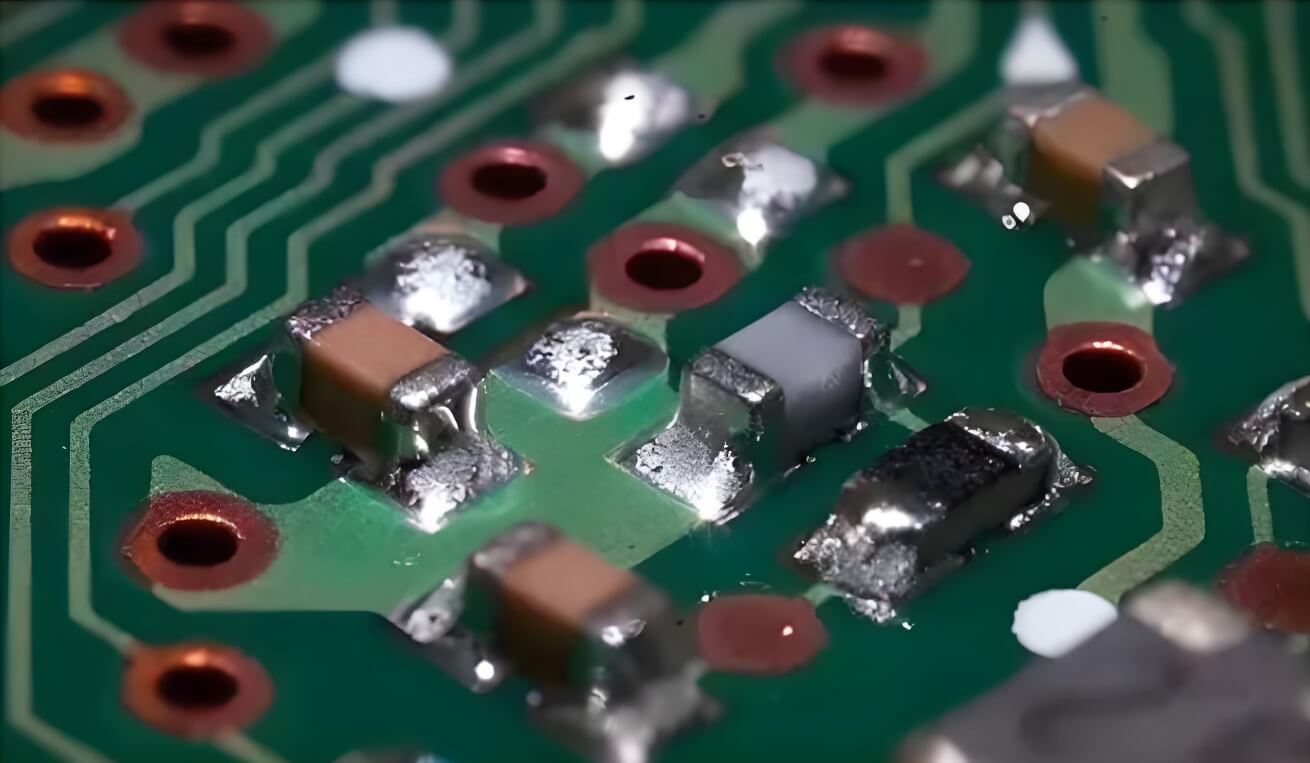PCBA solder paste processing refers to the process of welding and assembling electronic components and PCB printed circuits, whichplays a vital role in ensuring the quality and stability of electronic products . Cold soldering means that the solder does not completely wet the pad or solder foot during the soldering process, resulting in only partial contact between the pad and the solder foot. Cold soldering will cause poor contact of the solder joint, thereby affecting the reliability of current transmission and signal transmission.
The hazards of cold welding are mainly reflected in the following aspects:
Poor current transmission: Cold soldering can cause poor contact at the soldering point, which will generate resistance when current passes through , thus affecting the stability and efficiency of the circuit.
Unreliable signal transmission: Cold soldering can cause signal attenuation and interference, affecting the normal operation of the equipment and may even cause misoperation or damage.
Cause short circuit and open circuit: After the cold soldering, the contact between the pad and the solder foot is not firm, which can easily cause a short circuit or open circuit, thus causing damage to the PCBA board.
Shortened product life: Cold solder joints can cause unstable contact of solder joints. Over time, the solder joints may become loose or fall off, further affecting the reliability and life of the product.
In order to solve the problem of cold soldering, PCBA manufacturers usually use the following methods to improve it:
Optimize the welding process: adjust the welding temperature, welding time and welding pressure to ensure that the solder can completely wet the pad and solder foot during the welding process to improve the welding quality.
Use appropriate solder: Select solder material suitable for the welding process, ensure its viscosity and wetting properties, and reduce the occurrence of cold solder joints.
Strengthen welding management: strictly abide by the operating specifications during the welding process, strengthen welding training and management, and improve the welding technical level and quality awareness of operators.
Fake solder joints refer to solder that does not wet the pad or solder foot surface during the soldering process, but forms a thin film with the surrounding air. The soldering looks intact, but in fact, there is no effective connection with the solder joint. Fake solder joints are a hidden quality problem that is difficult to judge by appearance.
The main reasons for false soldering are: the solder viscosity is too low, resulting in difficulty in wetting the solder, the welding temperature is too high or the welding time is too long, there is dust and other debris around the welding area, etc.

False Soldering
The hazards of false welding are mainly reflected in the following aspects:
Unstable product performance: There are quality problems with the solder joints after false welding, which leads to unstable product performance and may cause disconnection, failure and other problems during use.
Signal transmission interruption: False welding causes the solder joints to not be truly connected, which will cause signal transmission interruption and affect the normal operation of the equipment.
Shortened product life: False soldering can cause the solder joints to loosen, and over time, the solder joints may fall off, shortening the life of the product.
Introduction to false solder joints and fake solder joints in PCBA processing
In order to solve the problem of false welding, PCBA manufacturers usually use the following methods to improve it:
Optimize the welding process: Reasonably select the welding temperature and time to ensure that the solder can fully wet the surface of the pad and the solder foot to improve the welding quality.
Strengthen environmental control: keep the welding area clean and reduce the impact of debris on welding quality.
Improve the technical level of operators: Strengthen the training and management of operators to improve their understanding and handling capabilities of false welding problems.
Cold solder joints and False solder joints are common quality problems in PCBA processing, which are crucial to ensuring the quality and performance of electronic products. PCBA processing manufacturers need to pay attention to and strengthen the control and improvement of cold solder joints and False solder joints to improve the reliability and stability of products. Only under the premise of ensuring welding quality can high-quality electronic products be produced.